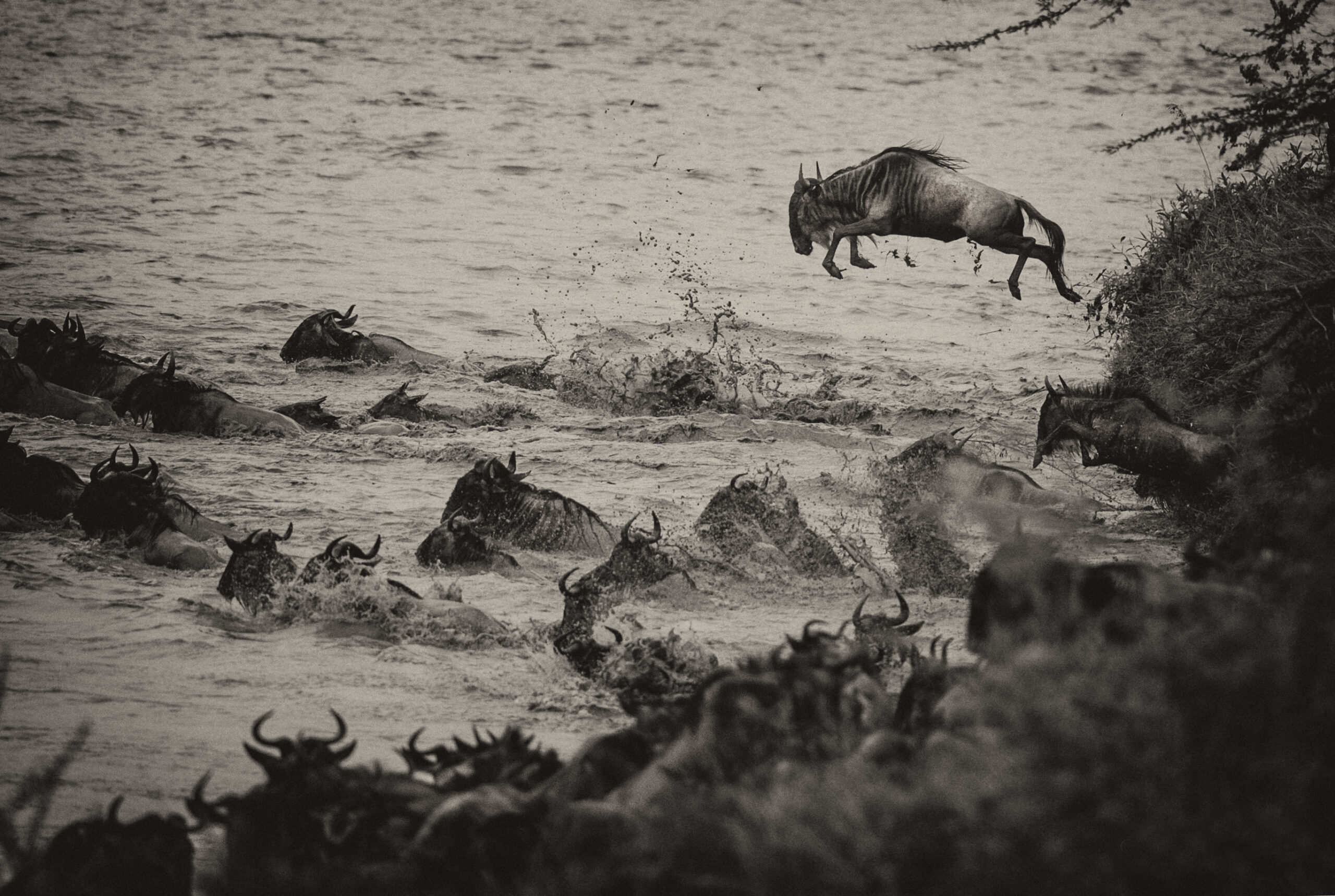When it comes to bucket-list-worthy travel experiences, few can compare to the awe-inspiring phenomenon of the Great Migration. This natural spectacle is often hailed as one of the most breathtaking wildlife events on the planet, and for good reason. Spanning the endless plains of the Serengeti in Tanzania and the Maasai Mara in Kenya, the Great Migration is a dramatic display of nature’s raw power and beauty, a testament to the resilience and instinct of millions of animals moving in search of food, water, and survival.
What is the Great Migration?
The Great Migration is the continuous cycle of over 1.5 million wildebeest, along with hundreds of thousands of zebras and gazelles, traveling across the Serengeti-Mara ecosystem. Their journey is a never-ending quest for fresh grazing pastures, following seasonal rainfall patterns across some of Africa’s most iconic landscapes. This extraordinary migration is driven by survival, as herds must navigate predators, perilous river crossings, and the harsh elements in their relentless pursuit of sustenance.
Masai Mara: The Heart of the Migration
One of the most famous and pivotal stages of the Great Migration unfolds in Kenya’s Maasai Mara National Reserve. Between July and October, this area becomes a theater of unparalleled drama, as the animals arrive from Tanzania’s Serengeti in massive numbers, drawn by the lush grasses of the Mara.
The Maasai Mara, with its sweeping savannahs, is the perfect backdrop for this wildlife spectacle. Its vast open plains allow visitors to witness not just the sheer numbers of migrating animals, but also the intense predator-prey interactions that occur here. Lions, cheetahs, leopards, hyenas, and crocodiles all lie in wait, taking advantage of the abundant prey.
The Drama of the River Crossings
Perhaps the most iconic image associated with the Great Migration is that of wildebeest herds braving the treacherous Mara River. As the animals attempt to cross, they must face two significant threats: swift currents that can sweep them away and the lurking Nile crocodiles waiting to strike.
The river crossings are moments of high tension. Thousands of wildebeests and zebras hesitate on the banks, gathering their courage before making the plunge. Once they begin, the scene is chaotic—a thrashing mass of horns, hooves, and desperate swimming. Many don’t make it, falling victim to the crocodiles or being trampled in the frenzy. For those that do survive, the reward is access to the green pastures of the Maasai Mara, a brief respite before the journey continues.
Witnessing this event firsthand is not for the faint of heart, but it is precisely this raw display of life and death that makes the Great Migration so mesmerizing. It’s a reminder of the circle of life and the incredible resilience of wildlife.
Why the Great Migration is a Once-in-a-Lifetime Experience
- Sheer Scale: The sheer number of animals involved in the Great Migration is overwhelming. It’s one of the few wildlife spectacles where you’ll witness millions of creatures moving as one, stretching as far as the eye can see.
- Dramatic Predator-Prey Encounters: The Great Migration offers some of the best opportunities for observing predator-prey interactions. The Maasai Mara is home to some of Africa’s most skilled hunters, and during the migration, the action intensifies as lions, cheetahs, and other predators take advantage of the influx of prey.
- River Crossings: The Mara River crossings are some of the most dramatic wildlife events one can witness. The tension, danger, and uncertainty of these crossings make for unforgettable moments.
- Breathtaking Scenery: The backdrop of the Maasai Mara and Serengeti is every bit as beautiful as the wildlife. From golden sunsets over the savannah to the expansive skies and rolling plains, the scenery alone is worth the trip.
- Cultural Experience: The Maasai Mara is not just a wildlife haven but also home to the Maasai people, whose rich culture and traditions add another layer of depth to the experience. Many tours offer opportunities to visit Maasai villages and learn about their way of life.
Planning Your Trip to Witness the Great Migration
The best time to visit the Maasai Mara to witness the Great Migration is typically from July to October, though the exact timing can vary depending on the rains. Numerous safari lodges and camps in the Maasai Mara offer incredible opportunities to experience the migration up close, with many located near prime river crossing points.
Booking a guided safari with experienced rangers is highly recommended. Not only will they help you track the herds, but they’ll also provide insightful knowledge about the ecosystem, the animals, and the delicate balance of nature at play.
Conclusion
The Great Migration is more than just a safari experience; it’s a once-in-a-lifetime journey into one of nature’s most awe-inspiring events. From the thundering hooves of wildebeests on the move to the heart-pounding drama of river crossings, witnessing this spectacle firsthand is a reminder of the incredible beauty and harsh realities of the natural world. Whether you’re a seasoned traveler or a first-time visitor to Africa, the Great Migration is an experience that will leave a lasting impression, forever etched in your memory as one of the most profound wildlife encounters you’ve ever witnessed.

